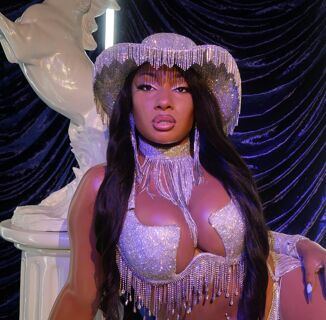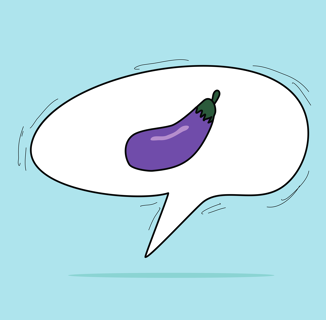A new Spider-Man game was released this week for PS4. It’s the first major release of a Spider-Man title since 2014, when The Amazing Spider-Man 2 was released alongside the Andrew Garfield movie of the same name. The game has been highly anticipated since the first gameplay demo was shown at E3 2017.
Since its release last week, the game has received mostly positive reviews and earned an 87 on Metacritic. A lot of its gameplay involves web swinging around New York City, which with 2018 graphics, can be quite beautiful. Fans have been posting their discoveries online through the new photo mode that the game provides. One such discovery, first made online by author Saladin Ahmed, was the Pride flag.
not saying that it's some radical move, but just as someone who came up 30 years ago playing Spider-Man video games with boys who constantly hurled homophobic insults at each other IRL this is…different
— Saladin Ahmed (@saladinahmed) September 8, 2018
“Wow. I stopped to perch on a building in Spider-Man and looked over and saw this,” Ahmed tweeted. “Thinking about all the 12-year-old kids who will be playing this game and seeing this in towns where it’s not safe to put that flag up.” Ahmed continued to say that although this isn’t the most radical move, “as someone who came up 30 years ago playing Spider-Man video games with boys who constantly hurled homophobic insults at each other [in real life] this is… different.”
Originally, I definitely didn’t see this addition as a radical act. Why should we give credit for doing the bare minimum? But Ahmed’s second tweet definitely shifted my perspective about it. I literally didn’t play video games for a decade because I was tired of the straight neighborhood boys and I had no one else to play games with. Even now, playing competitive team games gives me anxiety because I’m always afraid that someone in chat will get on mic and yell slurs.
Maybe Saladin had a point.
It’s also important to note that I came out at 14 and never really feared for my life or physical safety in regards to my sexuality. I definitely would tone down my feminine mannerisms for the conservative bubble I grew up in, but I never even considered violence as something that could happen to me. I know that other people have different circumstances and acknowledge that the Pride flag in the game might be more significant to them — which is awesome.
If someone tried to write a think piece applauding a TV show for showing a Pride flag in 2018, it would be met with extremely confused reactions — this isn’t 1995. But this isn’t TV or film; this is video games. Among the many subcultures in our society, the gaming community and the comics community have some of the most tense “culture wars” surrounding identity and diversity. Gamergate — a harassment campaign mostly directed towards women and lefty personalities in the gaming community — has been considered part of the foundation of current alt-right groups. And more recently, a connected movement called Comicsgate has emerged with similar anti-diversity politics.
Both GG and CG believe that diversity in games and comics is the result of our PC culture and is being forced down the throats of real fans. They often argue that women and LGBTQ people don’t actually play games or read comics and simply want to ruin the industries and their communities.
Another reason this point of inclusion doesn’t feel personally compelling is because I, as well as other younger LGBTQ folks I know, admittedly don’t feel an attachment to the Pride flag. One part of that is just a generational thing. The Pride flag is a tool that we don’t feel we need because the cultural acceptance meter has moved several degrees in the positive direction.
That being said, I know that many people have a strong attachment to the flag, especially older folks who grew up in places where they had issues with being gay. Gay health writer Daniel Summers recently wrote a really compelling piece for Slate about his experience revisiting his hometown with his husband and kids for his mother’s funeral. In the piece he talks about bringing his family to a local carnival, but still being worried while he did it.
“My husband and I decided to bring the kids, but it wasn’t until we arrived that I finally relaxed a bit. It was seeing black families and women in hijabs there that made me feel safe there too,” Summers wrote. “When you’re in an often-despised minority, being around other members of often-despised minorities can be incredibly comforting. My hometown has, it seems, become more diverse than I remember growing up.”
I talked to Summers and he told me that the Pride flag brings out a similar feeling of security — almost like a designated safe zone.
“When I see Pride flags, it is a sign that I can be at ease, and that people honor who I am and view me as worthy of respect and equality. It signals a welcome to me that is very important and meaningful, and tells me that I can feel safely myself. The feeling of safety is something I never take for granted, and overt symbols of welcome are genuinely appreciated.”
With all of this in mind, it’s helpful to think about the Pride flags in Spider-Man not in terms of how they fit into our culture generally, but how they fit into the specific medium and its community. Again, in most other aspects of American culture, the simple act of showing a Pride flag might not be that notable. In fact, with the amount of companies that simply adopt the visuals of Pride without doing anything to better the lives of LGBTQ, the flag might even be met with skepticism.
But for a slightly older generation of queer people or maybe queer nerds who don’t have the luxury of being open, seeing the flag in a beloved superhero franchise could be a huge moment. LGBTQ people in gaming and comics do not get a lot of wins, so I’ll let us celebrate this one.
Help make sure LGBTQ+ stories are being told...
We can't rely on mainstream media to tell our stories. That's why we don't lock our articles behind a paywall. Will you support our mission with a contribution today?
Cancel anytime · Proudly LGBTQ+ owned and operated
Read More in Culture
The Latest on INTO
Subscribe to get a twice-weekly dose of queer news, updates, and insights from the INTO team.
in Your Inbox














